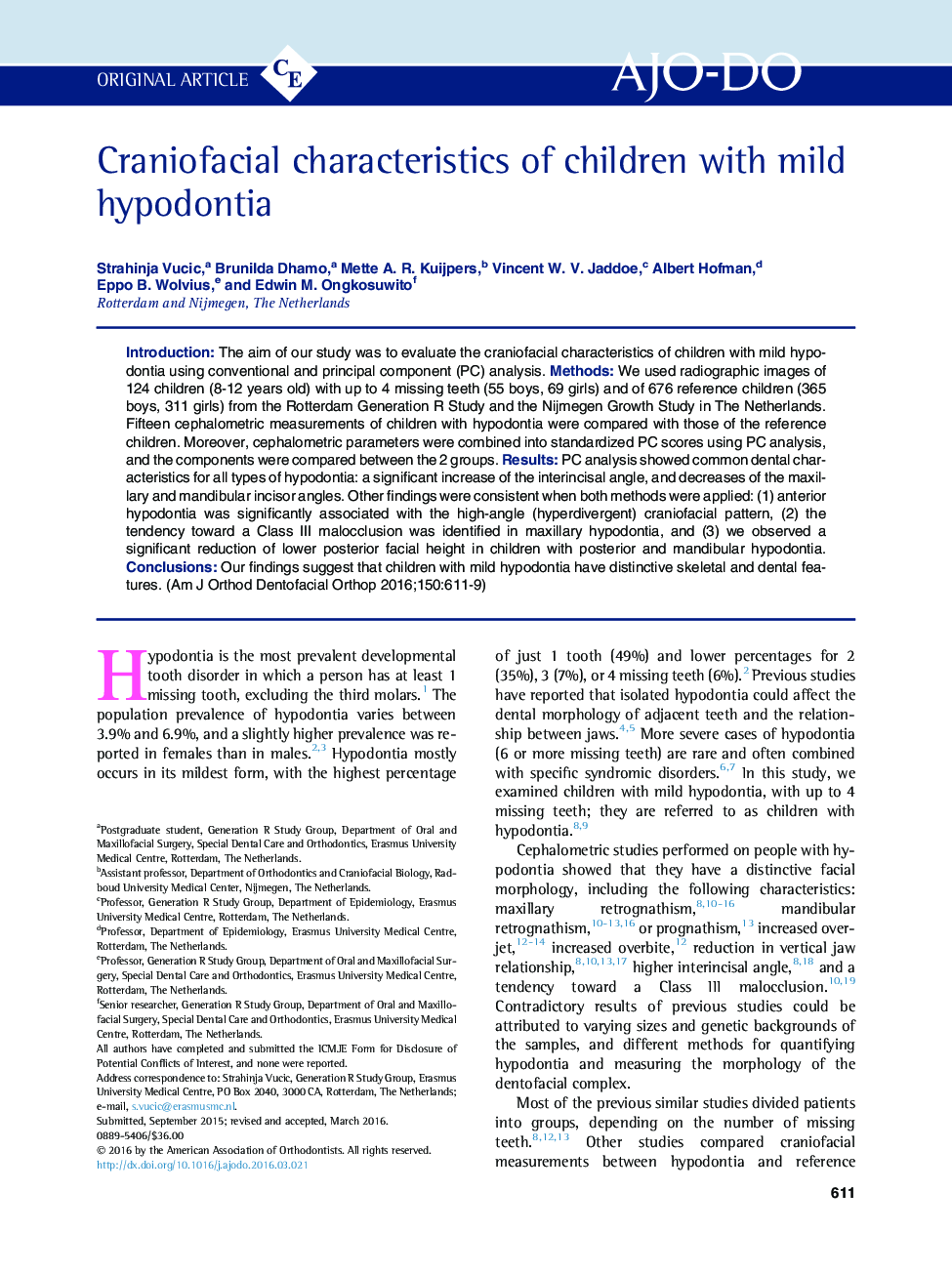| Article ID | Journal | Published Year | Pages | File Type |
|---|---|---|---|---|
| 5637796 | American Journal of Orthodontics and Dentofacial Orthopedics | 2016 | 9 Pages |
â¢Anterior hypodontia was associated with bimaxillary retrognathism.â¢Maxillary hypodontia was associated with a tendency toward Class III malocclusion.â¢Posterior and mandibular hypodontia was associated with reduced vertical parameters.â¢Principal component analysis showed that all types of hypodontia had changes in dental parameters.
IntroductionThe aim of our study was to evaluate the craniofacial characteristics of children with mild hypodontia using conventional and principal component (PC) analysis.MethodsWe used radiographic images of 124 children (8-12 years old) with up to 4 missing teeth (55 boys, 69 girls) and of 676 reference children (365 boys, 311 girls) from the Rotterdam Generation R Study and the Nijmegen Growth Study in The Netherlands. Fifteen cephalometric measurements of children with hypodontia were compared with those of the reference children. Moreover, cephalometric parameters were combined into standardized PC scores using PC analysis, and the components were compared between the 2 groups.ResultsPC analysis showed common dental characteristics for all types of hypodontia: a significant increase of the interincisal angle, and decreases of the maxillary and mandibular incisor angles. Other findings were consistent when both methods were applied: (1) anterior hypodontia was significantly associated with the high-angle (hyperdivergent) craniofacial pattern, (2) the tendency toward a Class III malocclusion was identified in maxillary hypodontia, and (3) we observed a significant reduction of lower posterior facial height in children with posterior and mandibular hypodontia.ConclusionsOur findings suggest that children with mild hypodontia have distinctive skeletal and dental features.
